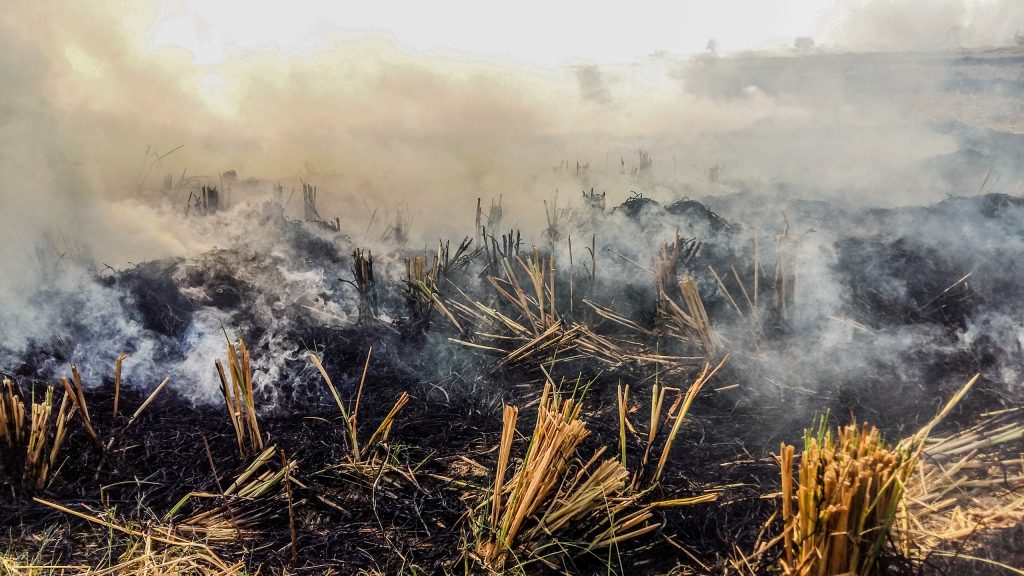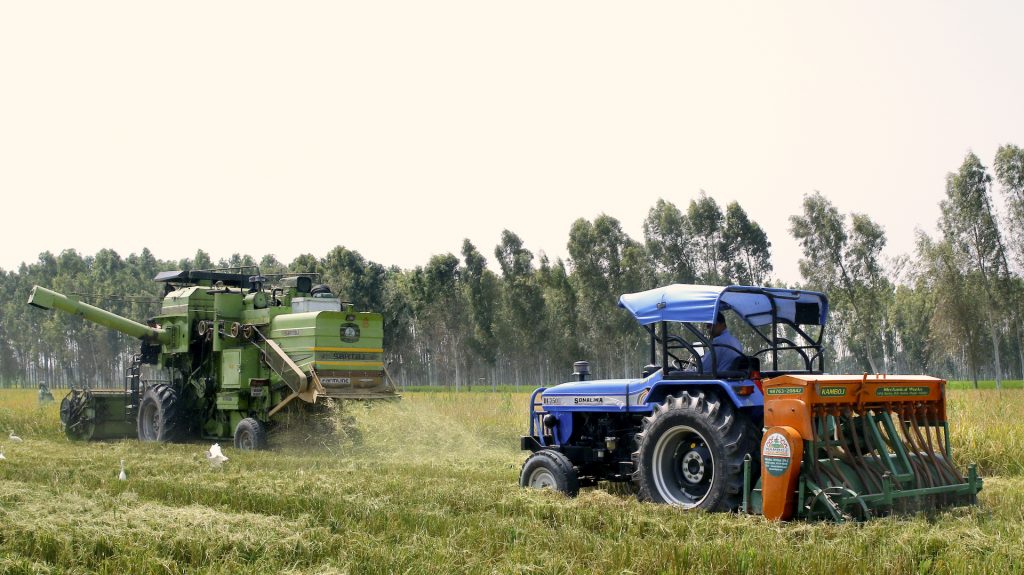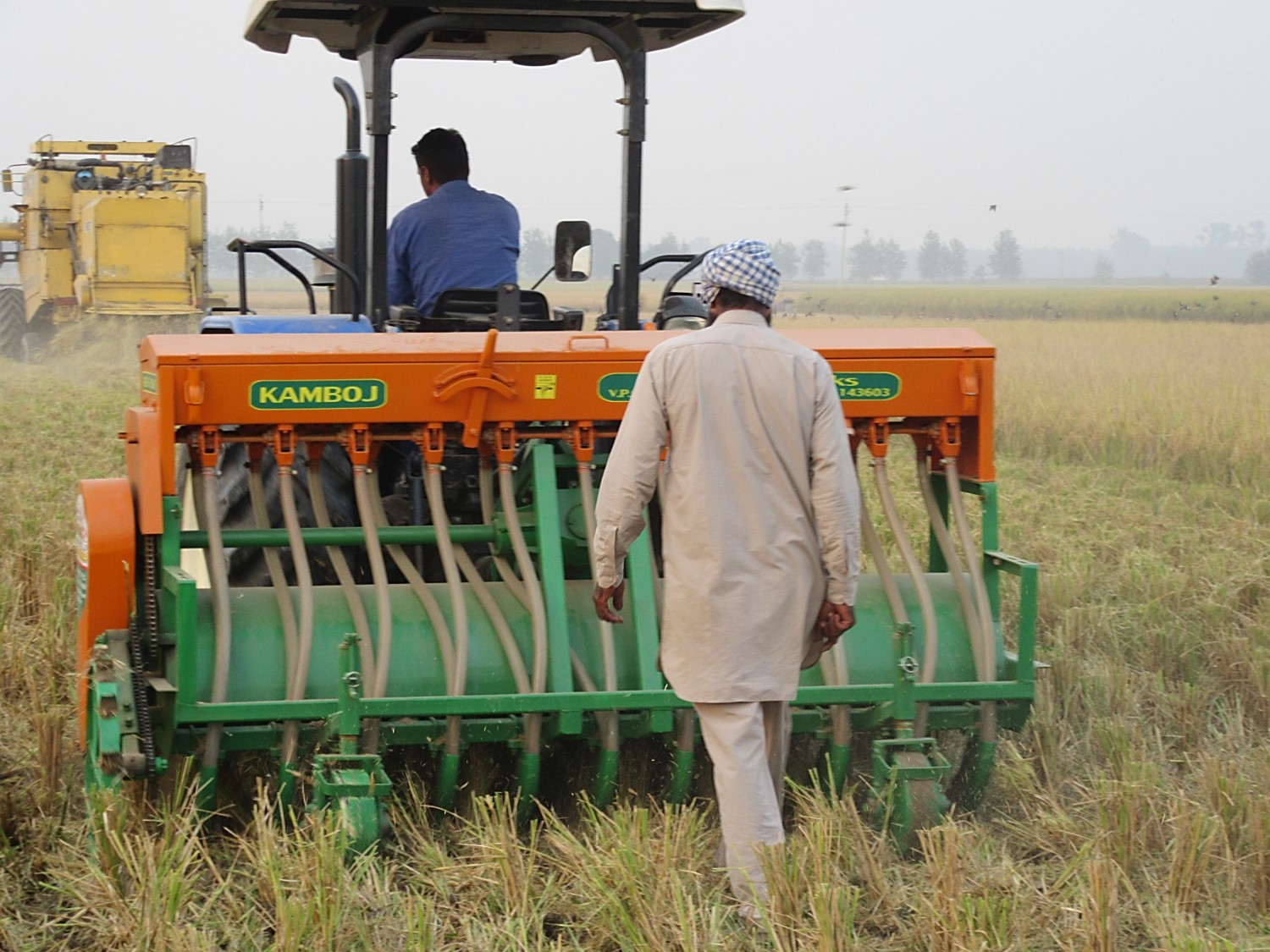June marks the start of the rice growing season in India’s breadbasket but on the quiet fields of Haryana and Punjab you wouldn’t know it.
Usually the northwestern Indian states are teeming with migrant laborers working to transplant rice paddies. However, the government’s swift COVID-19 lockdown measures in late March triggered reverse migration, with an estimated 1 million laborers returning to their home states.
The lack of migrant workers has raised alarms for the labor-dependent rice-wheat farms that feed the nation. Healthy harvests are driven by timely transplanting of rice and, consequently, by the timely sowing of the succeeding wheat crop in rotation.
Without political support for alternative farming practices, crop losses from COVID-19 labor disruptions could reach $1.5 billion and significantly diminish the country’s grain reserves, researchers from the International Maize and Wheat Improvement Center (CIMMYT) warned.
Researchers also fear delayed rice transplanting could encourage unsustainable residue burning as farmers rush to clear land in the short window between rice harvest and wheat sowing. Increased burning in the fall will exacerbate the COVID-19 health risk by contributing to the blanket of thick air pollution that covers much of northwest India, including the densely populated capital region of New Delhi.

Both farmers and politicians are showing increased interest in farm mechanization and crop diversification as they respond to COVID-19 disruptions, said M.L. Jat, a CIMMYT scientist who coordinates sustainable intensification programs in northwestern India.
“Farmers know the time of planting wheat is extremely important for productivity. To avoid production losses and smog-inducing residue burning, alternative farm practices and technologies must be scaled up now,” Jat said.
The time it takes to manually transplant rice paddies is a particular worry. Manual transplanting accounts for 95% of rice grown in the northwestern regions. Rice seedlings grown in a nursery are pulled and transplanted into puddled and leveled fields — a process that takes up to 30 person-days per hectare, making it highly dependent on the availability of migrant laborers.
Even before COVID-19, a lack of labor was costing rice-wheat productivity and encouraging burning practices that contribute to India’s air pollution crisis, said CIMMYT scientist Balwinder Singh.
“Mechanized sowing and harvesting has been growing in recent years. The COVID-19 labor shortage presents a unique opportunity for policymakers to prioritize productive and environmentally-friendly farming practices as long term solutions,” Singh said.
Sustainable practices to cope with labor bottlenecks
CIMMYT researchers are working with national and state governments to get information and technologies to farmers, however, there are significant challenges to bringing solutions to scale in the very near term, Singh explained.
There is no silver bullet in the short term. However, researchers have outlined immediate and mid-term strategies to ensure crop productivity while avoiding residue burning:
Delayed or staggered nursery sowing of rice: By delaying nursery sowing to match delays in transplanting, yield potential can be conserved for rice. Any delay in transplanting rice due to labor shortage can reduce the productivity of seedlings. Seedling age at transplanting is an important factor for optimum growth and yield.
“Matching nursery sowing to meet delayed transplanting dates is an immediate action that farmers can take to ensure crop productivity in the short term. However, it’s important policymakers prioritize technologies, such as direct seeders, that contribute to long term solutions,” Singh said.
Direct drilling of wheat using the Happy Seeder: Direct seeding of wheat into rice residues using the Happy Seeder, a mechanized harvesting combine, can reduce the turnaround time between rice harvest and wheat sowing, potentially eliminating the temptation to burn residues.
“Identifying the areas with delayed transplanting well in advance should be a priority for effectively targeting the direct drilling of wheat using Happy Seeders,” said Jat. The average farmer who uses the Happy Seeder can generate up to 20% more profits than those who burn their fields, he explained. “Incentivizing farmers through a direct benefit transfer payment to adopt ‘no burn’ practices may help accelerate transitions.”
Directly sown rice: Timely planting of rice can also be achieved by adopting dry direct seeding of rice using mechanized seed-cum-fertilizer planters. In addition to reducing the labor requirement for crop establishment, dry direct seeding allows earlier rice planting due to its lower water requirement for establishment. Direct-seeded rice also matures earlier than puddled transplanted rice. Thus, earlier harvesting improves the chance to sow wheat on time.
“CIMMYT researchers are working with the local mechanical engineers on rolling out simple tweaks to enable the Happy Seeder to be used for direct rice seeding. The existing availability of Happy Seeders in the region will improve the speed direct rice sowing can be adopted,” Jat said.
Crop diversification with maize: Replacing rice with maize in the monsoon season is another option to alleviate the potential shortage of agricultural labor due to COVID-19, as the practice of establishing maize by machine is already common.
“Research evidence generated over the past decade demonstrates that maize along with modern agronomic management practices can provide a profitable and sustainable alternative to rice,” Jat explained. “The diversification of rice with maize can potentially contribute to sustainability that includes conserving groundwater, improving soil health and reducing air pollution through eliminating residue burning.”

Getting innovations into farmers’ fields
Rapid policy decisions by national and state governments on facilitating more mechanized operations in labor-intensive rice-wheat production regions will address labor availability issues while contributing to productivity enhancement of succeeding wheat crop in rotation, as well as overall system sustainability, said ICAR’s deputy director general for agricultural extension, AK Singh.
The government is providing advisories to farmers through multiple levels of communications, including extension services, messaging services and farmer collectives to raise awareness and encourage adoption.
Moving toward mechanization and crop diversity should not be viewed as a quick fix to COVID-19 related labor shortages, but as the foundation for long-term policies that help India in achieving the UN Sustainable Development Goals, said ICAR’s deputy director general for Natural Research Management, SK Chaudhari.
“Policies encouraging farming practices that save resources and protect the environment will improve long term productivity of the nation,” he said.
Northwestern India is home to millions of smallholder farmers making it a breadbasket for grain staples. Since giving birth to the Green Revolution, the region has continued to increase its food production through rice and wheat farming providing bulk of food to the country.
This high production has not come without shortfalls, different problems like a lowering water table, scarcity of labor during peak periods, deteriorating soil health, and air pollution from crop residue burning demands some alternative methods to sustain productivity as well as natural resources.
Cover photo: A farmer uses a tractor fitted with a Happy Seeder. (Photo: Dakshinamurthy Vedachalam/CIMMYT)

 Climate adaptation and mitigation
Climate adaptation and mitigation 
